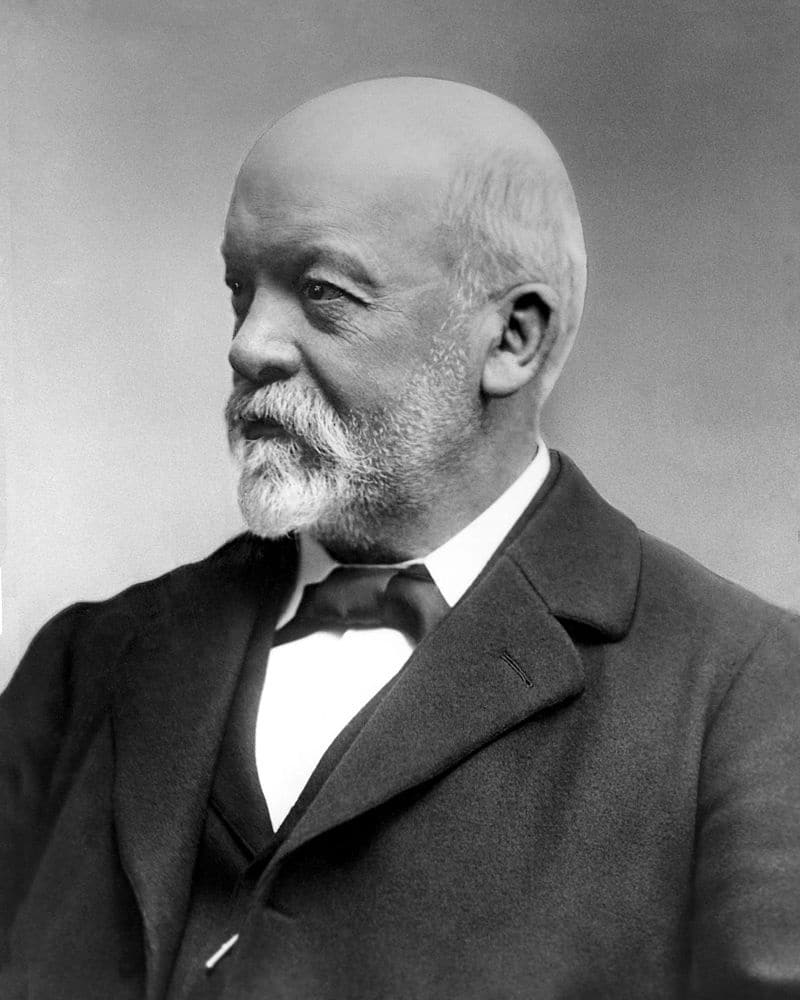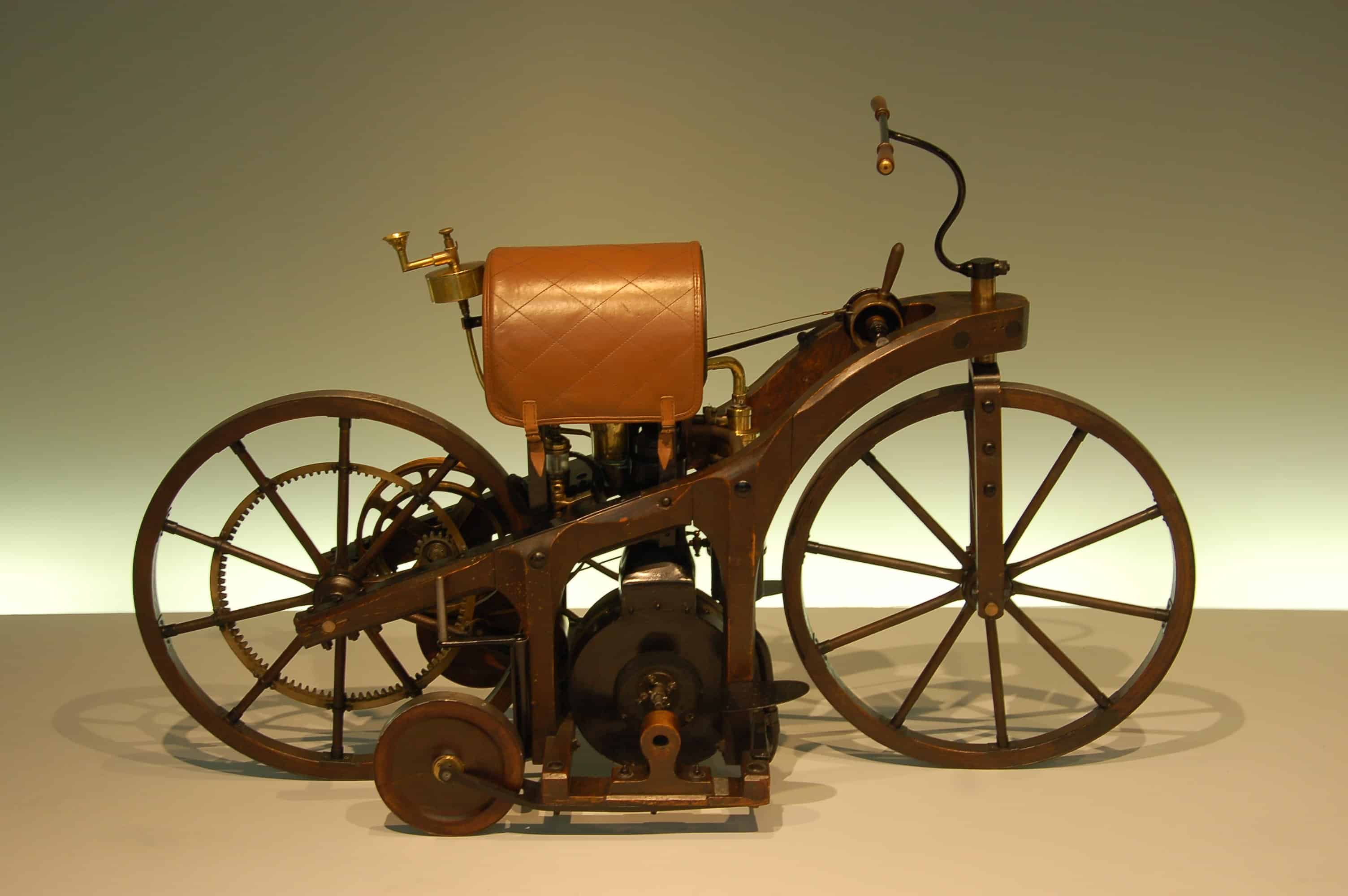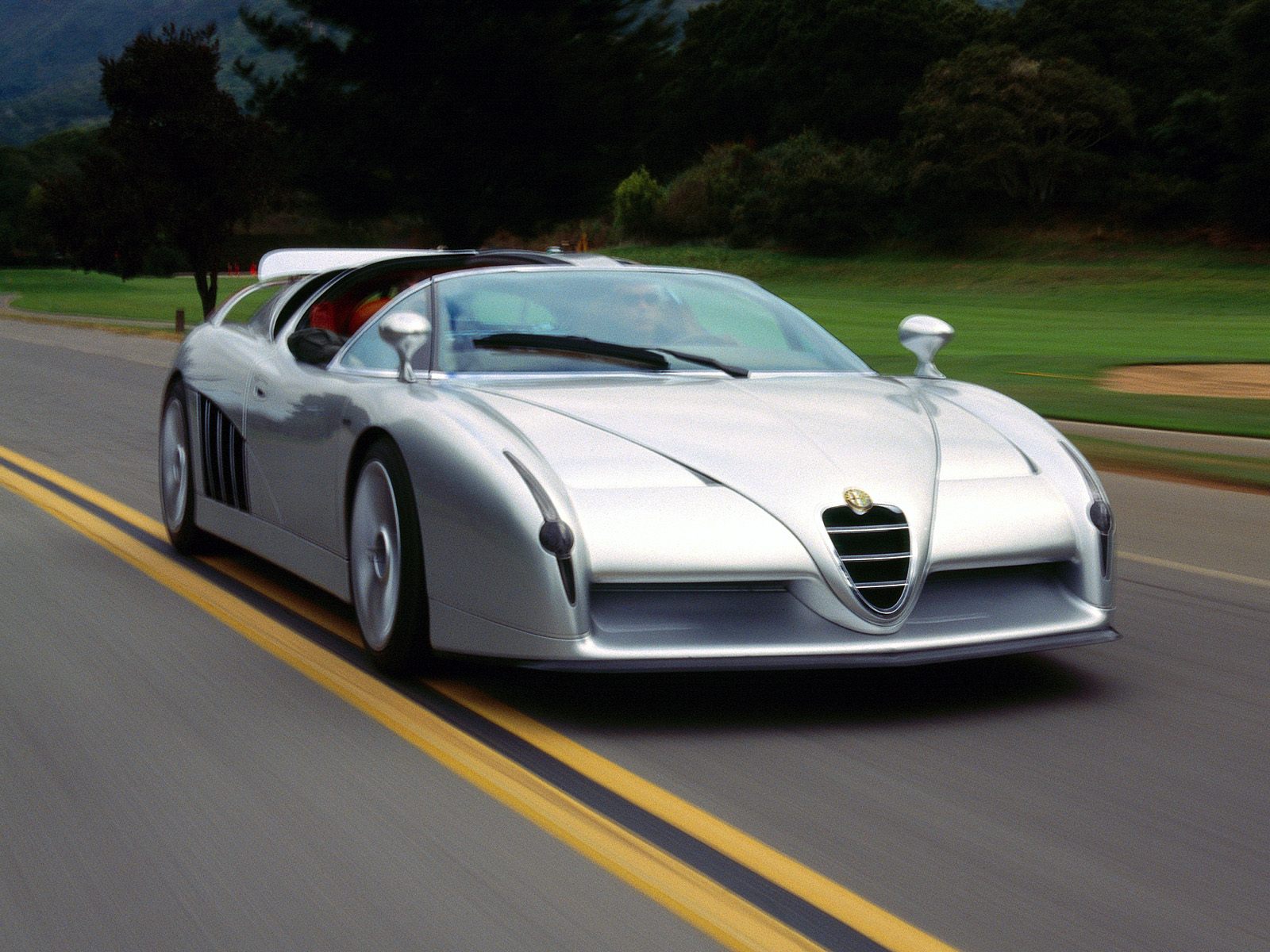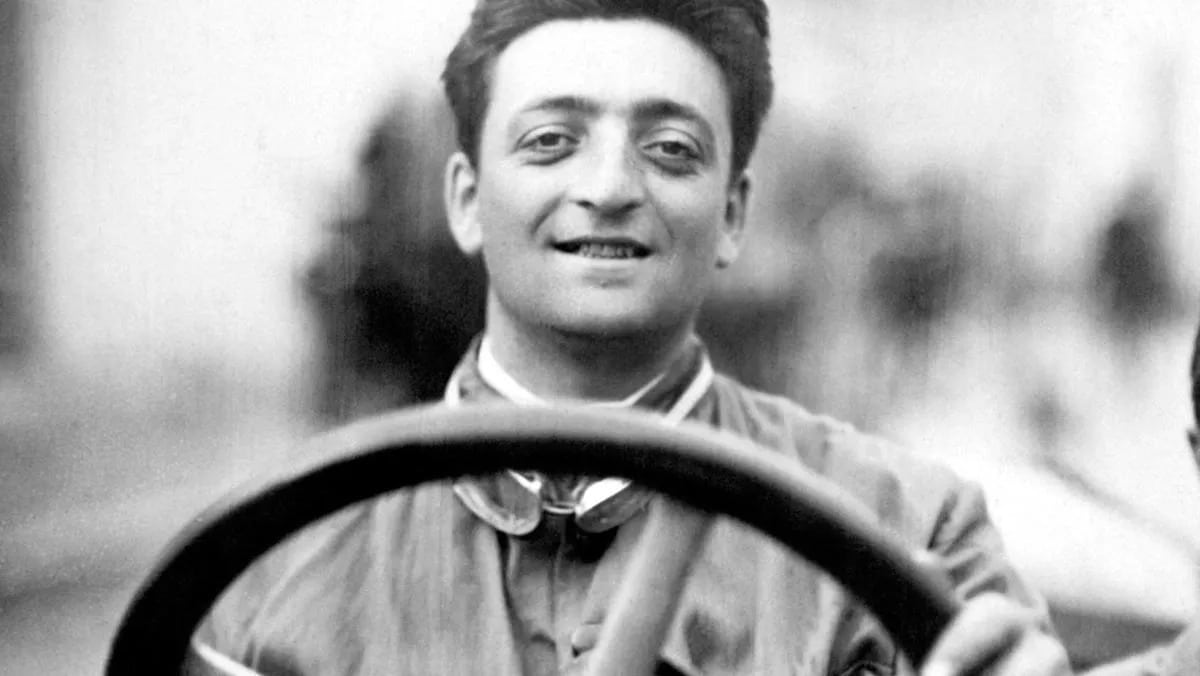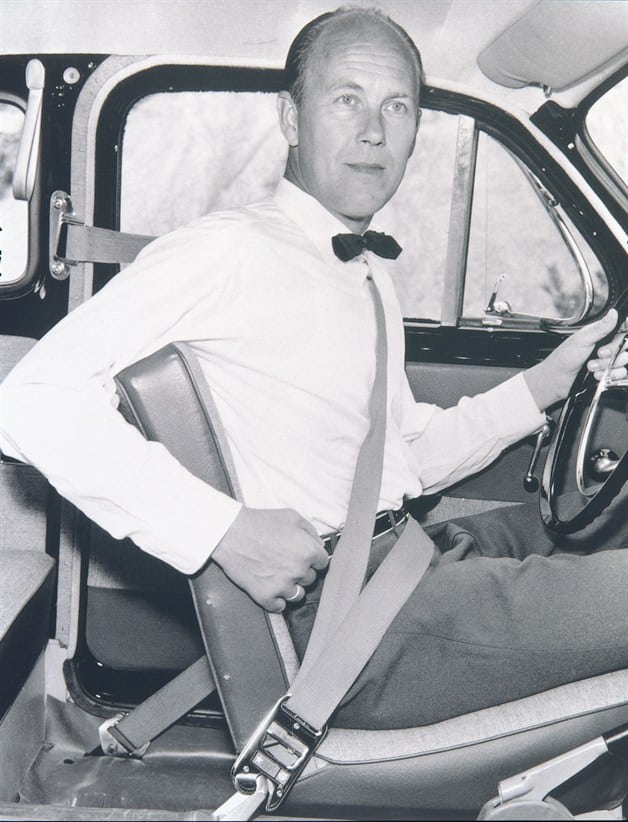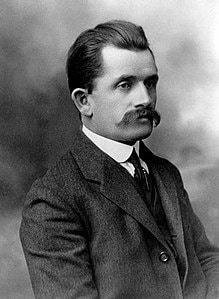
There are many very important names in the automobile industry, many engineers and business people who revolutionized the automobile sector. Some of them have gone unnoticed, they are anonymous, but others have become automotive legends.
We are going to dedicate this article to them in which we will see some of the men who marked the automotive sector more. Do you want to know more about them?
Andre Citroen
- Source: EspirituRACER
André Citroën He was born in the city of Paris on February 5, 1878. He was the son of Lévie Citroën, a Jewish diamond cutter from the Netherlands who emigrated to Paris in 1873, and Masza Amelia Kleinman, a Polish Jew originally from Warsaw. After his arrival in Paris, Lévie Citroen decided to change the way of writing his last name and transformed it into Citroën, adding an umlaut.
A tragic event occurred on September 14, 1884, when André was only five years old: his father took his own life. Faced with this situation, his mother asked him to take over the diamond and fine pearl business that belonged to her husband. At the age of ten, André discovered the avant-garde and visionary work of Jules Verne, an influence that would mark his life forever. The construction of the iconic Eiffel Tower for the World's Fair in Paris in 1889 sparked his interest in becoming an engineer and industrialist, and prompted him to face the great challenges of the automobile industry of the XNUMXth century.
When he was twenty-two years old, in the year 1900, he graduated from the prestigious l'École Polytechnique, the leading engineering school in France. His first job was at a wheel manufacturing company owned by family friends, where he found inspiration in a gear system that he would later use as the basis for his automobile logo: the famous double arrow. or chevron. That was how he used this symbol and founded the well-known brand Citroen.
In addition to this, André was a pioneer in some issues in the automotive industry, he not only founded a brand, he was also a pioneer in using the methods of chain work in europe, devised the electric ignition for cars and also the front-wheel drive.
Gottlieb Daimler
Gottlieb Wilhelm Daimler, was a leading figure among renowned engineers, builders and industrialists in Germany. He is considered one of the pioneers in the automobile industry for several reasons that we will see later. He was born in the year 1834 in Schorndorf, a city located approximately 20 kilometers east of Stuttgart. His parents were Johannes Däumler, who was a baker, and his wife Frederika. He married Emma Kurtz in 1867 and had five children.
Daimler studied at the Stuttgart Polytechnic School. After completing his training, he initially turned to weapons manufacturing, but later gravitated towards mechanical engineering. He studied in countries like France, Belgium and England. Upon returning to Germany, he gained experience in various companies related to mechanical engineering, until in 1872 he was appointed technical director of the company chaired by Nikolaus Otto, the inventor of four-stroke gasoline engine.
During his time at the company, Daimler realized the potential of applying the engine made at the Deutz plant to vehicle propulsion. However, not having the necessary support to carry out his ideas, Daimler decided to leave the company and establish his own workshop. In 1882, he left Otto's company and founded together with Wilhelm Maybach his own industry dedicated to the manufacture of internal combustion engines. Three years later, they patented one of the first engines capable of driving vehicles at considerable speeds and developed the first carburetor that allowed the use of gasoline as fuel.
This new motor was installed on a bicycle, making it a the first motorcycle in history. Continuing his mechanical experiments, he soon after built a four-wheeled car with a steering stick, belt drive, and four-speed gearbox. This vehicle reached a speed of eighteen kilometers per hour and, to commercialize it, Daimler founded his own factory. And so the first Mercedes would be born, along with Karl Benz, founding the Mercedes-Benz brand.
Daimler was a pioneer in the development of the internal combustion engine, as well as being the first to install an engine in a two-wheeled vehicle, He is considered the inventor of the truck, etc.
Rudolf diesel
- GERMANY – JUNE 06: In 1892 Rudolf Diesel (1858-1913) patented a design for a new type of internal combustion engine. In 1897 he produced a 25 horsepower, four-stroke, single vertical cylinder compression engine, the high efficiency of which, together with its comparative simplicity of design, made it an immediate commercial success. Subsequent royalty fees brought great wealth to its inventor. He was lost overboard from the mail steamer 'Dresden' during a trip to London in 1913 and was assumed to have drowned. (Photo by SSPL/Getty Images)
Rudolf Christian Karl Diesel, known as Rudolf diesel, was a Franco-German engineer recognized as the inventor of the diesel engine and fuel that bears his name. Diesel's invention revolutionized engine ignition by making it happen internally. By compressing the air in the cylinder, heating was generated that allowed the fuel to ignite automatically when it came into contact with air. This innovation represented a significant change in the use of the engines of the time and provided great advantages for the future.
Diesel born in Paris in 1858, being the second of the three children of Elise Strobel and Theodor Diesel, Bavarian immigrants who had settled in the city. In 1870, due to the outbreak of the Franco-Prussian War, the family was forced to leave France, and Rudolf was sent to Augsburg. Subsequently, he returned to Paris as a representative of the refrigerating machine company of his mentor.
Between 1893 and 1897, Diesel worked in the workshops of the company MAN AG, belonging to the German business group Krupp. There he would create the first engine in the world capable of burning vegetable oil (specifically palm oil, or with peanut oil, and later adapted to diesel of petroleum origin) in working conditions. This engine was presented at the international fair in Paris and was later baptized with the surname of its inventor.
For several years, Diesel was object of attacks and criticism. He was accused of not having really invented a new engine and his invention of the diesel engine was dismissed as a fraud. Critics argued that the diesel engine was based on ideas previously developed by Herbert Akroyd Stuart.
Nikolaus August Otto
Nikolaus August Otto, was born in Cologne (Germany) on June 10, 1832. As you may know, and as I mentioned earlier, he was a renowned German engineer known worldwide for his invention in 1876 of the first four-stroke gasoline engine with compressed charge, which laid the foundations for all later internal combustion engines.
In 1864, together with Eugen Langen, he founded the world's first engine factory, called "NA Otto & Cie". In addition to this, his son, Gustav Otto, together with Karl Rapp, would co-found BMW in 1917.
Otto traveled to Italy, where he became interested in the gas machines of the Belgian engineer and inventor Etienne Lenoir. Despite not having a solid technical background, Otto built his first machine in 1867 and carried out outstanding studies on the gas engine and in 1872 put into practice the construction of the four-stroke internal combustion engine, thus creating a static power machine that it would be the basis for the development of the Otto engine. This engine became famous throughout the world as a power source for vehicles, trains, ships and airplanes, and laid the foundation for the invention of the diesel engine.
currently sold millions of gasoline engines based on your idea...
Giorgetto Giugiaro
- Europa Design Awards ceremony 2016
Giorgetto Giugiaro, born August 7, 1938 in Garessio, Italy, is a renowned Italian automobile designer, recognized for his talent in creating vehicles that have been highly popular and sold throughout the world. Furthermore, he was the one who created the first multi-purpose vehicle, the Lancia Megagamma. For all of his extensive work he would be awarded Car Designer of the Century in 1999.
His are studies of design as well known as Bertone, Ghia and Italdesign Giugiaro. In them he has created countless very popular models that have come out of his design table, such as:
- Alfa Romeo Giulia GT
- Iveco 491
- Alfa Romeo 156
- Lamborghini Marco Polo
- Lamborghini Cala
- Audi 50
- Audi 80
- Lancia Delta
- Lancia Prism
- Launch Thema
- Lexus GS
- BMW M1
- Lotus Esprit Concept
- maserati bora
- Maserati Ghibli
- Maserati Quattroporte
- Bugatti Chiron
- D.M.C. DeLorean
- Renault 19
- Renault 21
- Saab 9000
- SEAT Ibiza III
- SEAT Malaga
- SEAT Toledo II
- SEAT Ibiza III
- SEAT Toledo III
- SEAT Leon II
- SEAT Cordoba I
- SsangYong Korando
- Fiat 124
- Fiat Punto
- Fiat Panda
- Fiat Grande Punto
- toyota volta
- Volkswagen Passat
- Volkswagen Golf
- Ford Mustang 2006
- Hyundai pony
- Hyundai Sonata
- isuzu piazza
- And a very long etc.
Alfred Horner Munro
The story of the automatic transmission tells of the missed opportunity for Alfred Horner Munro, a Canadian. He originally developed it in 1921, he obtained a patent for his design in 1923 and received UK and US patents in 1924 and 1927, respectively. Munro's early design used compressed air instead of hydraulic fluid, as is used in modern systems. However, he was unable to find a commercial application for his invention.
In 1932, Brazilian engineers José Braz Araripe and Fernando Lely Lemos developed a version with hydraulic fluid. They sold their design to General Motors in 1940, and driving was changed forever. Thanks to this technology it prevents drivers from having to change gear manually while the vehicle is in motion. In addition to being an advantage for people with disabilities, it makes it easier to drive with two hands more frequently.
Enzo Ferrari
Enzo Ferrari was born on February 18, 1898 in Modena, Italy. He was a famous Italian businessman and car designer, best known for being the founder of the iconic Ferrari sports car brand. Enzo Ferrari began his motorsport career as a racing driver in the 1910s, competing in local and regional events. However, his real talent was in engineering and automobile design. In the 1920s, he joined the Alfa Romeo team as a driver and later took over as manager of the Alfa Romeo racing team.
In 1939, he founded his own company, Ferrari, with the aim of build high performance sports cars. However, during World War II, production was halted and Ferrari focused on rebuilding its factory after the conflict. His obsession with speed and performance led him to design and produce high-performance engines that became the hallmark of Ferrari automobiles. These engines won numerous races and became a symbol of power and technical excellence.
Furthermore, Enzo Ferrari was pioneer in the adoption of advanced technologies in the automotive industry, such as aerodynamics and the use of lightweight materials in the construction of automobiles. He was also a supporter of the Ferrari racing team and played a pivotal role in the development and success of the Ferrari Formula 1 team, which has become one of the most successful and renowned teams in motorsport history.
eugene houdry
Growing concerns about ecology in the early 1970s led the Environmental Protection Agency to draw up stricter regulations on exhaust emissions in 1975. The concept of the catalytic converter came from the French engineer eugene houdry, who was concerned about smog and air pollution in Los Angeles.
It could be argued that, in terms of benefit to humanity, exhaust catalytic converter It is the most important automotive invention ever developed. Converts toxins and other pollutants into less dangerous forms, improving air quality. In addition, thanks to the silencer that was patented in 1962, it makes the vehicles quieter. However, it must be said that the first device of this type would not be produced until 1973.
JE Francis

Despite being little known, Francis would devise one of the inventions that has saved the most lives: anti-lock brakes, that is, ABS. This system dates back to 1908, when JE Francis developed the system for trains. The concept was introduced to the aerospace industry in the 1950s before spreading to automobiles in the 1970s and motorcycles in the 1990s.
However, the first patented anti-lock braking system was developed in 1928 by the German engineer Karl Wessel, but a functional product never materialized. In 1971, Chrysler introduced the "Four-Wheel Sure Brake," the first computer-operated anti-skid braking system to be offered on an American automobile. It was standard equipment on the '71 Imperial.
Walter Linderer

among the american john hetrick (generally recognized as the inventor) and the German Walter Linderer In 1951, they dispute one of the patents that has also saved many lives in the event of an accident with a strong impact, and that is the famous airbag. Their systems used compressed air that was activated by spring, bumper contact, or manually by the driver.
The technology was widely adopted in the 1960s, thanks to the shock sensor development. Several automakers included them in their 1970s models, but airbags didn't become standard equipment until the 1990s.
However, it is not an invention without drawbacks, the explosive force of an airbag when deployed it can cause abrasions and burns from the energy released, retinal detachment, suffocation and even death, especially in children. Despite this, it is an essential safety element for today's cars.
Nils bohlin
Volvo's engineer Nils bohlin, took the seat belt into safer territory by developing the 3-point belt, which is designed to dissipate deceleration energy during a collision across the passenger's chest, pelvis, and shoulders. The Bohlin belt was introduced by Volvo in 1959 and first appeared on the Volvo PV 544. Volvo subsequently opened the patent in the interest of the safety of the general public. The lives of many people are owed to him...
Ferdinand Porsche
Ferdinand Porsche was an Austrian-German automobile engineer and designer born on September 3, 1875 in Maffersdorf, Austria-Hungary (now Liberec, Czech Republic). He is widely recognized for being the founder of the Porsche automobile company and for his outstanding work in the field of automotive engineering. In addition to founding Porsche AG, he also worked designing cars at Mercedes, as well as founding Auto Union, the predecessor of today's Audi.
On the other hand, he is owed acknowledgments such as the wheel-hub motor, mid-engine for racing cars, device to prevent drive wheels from skidding, gearbox synchronization system, torsion bar, and other patents on electric and combustion motors for various vehicles.
Edgar A Walz Jr.
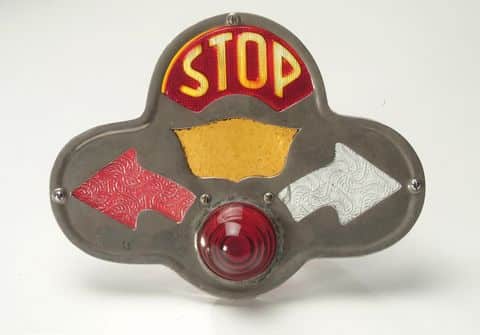
On the other hand, according to the December 1985 Popular Mechanics magazine, the Protex Safety Signal Co. introduced flashing turn signals in 1920. The The first modern turn signal was created by Edgar A. Walz Jr., who in 1925 obtained a patent for one and tried to market it to major automobile manufacturers. However, they showed no interest and the patent expired 14 years later.
However, the first electric flasher Flashing was patented in 1938 and offered on Buick automobiles. Another invention without which it would now be unthinkable to circulate safely.
Alfred Buchi
Alfred Buchi Born on July 11, 1879, in Winterthur, Switzerland, and raised both there and in Ludwigshafen, Büchi was the son of Johann Büchi, a leading executive at the Swiss industrial engineering company Sulzer. Following in his father's footsteps, Alfred embarked on a similar career and achieved renown thanks to his inventions. In 1899, he began his engineering studies at the Zurich Federal School of Technology (ETH) in Zurich, graduating in 1903. He then continued his engineering studies in Belgium and England before returning to Switzerland, specifically Wetzikon, in 1908.
During his first years outside of Switzerland, Büchi focused on improving the efficiency of the combustion engine and solving the problem of heat loss in the exhaust system. On November 16, 1905, he obtained patent number 204630 from the German Patent and Trademark Office. This patent described a "large supercharger" as a solution to capture heat, using an "axial compressor, radial piston engine, and axial turbine on a common shaft." Although the idea was simple, the materials and fuels necessary for its correct operation were not yet available. However, his 1905 invention is considered the dawn of the turbocharger era, although its most recognized milestone is a later 1925 patent describing "pulse operation for low-pressure supercharging". The principles established by Büchi in 1905 for the turbocharger have remained unchanged to date. This device improves power and efficiency by introducing additional air into the cylinders, using heat from the exhaust system to drive the turbine.
Henry Ford
Henry Ford (July 30, 1863, Michigan - USA) was an American entrepreneur and visionary, recognized as the founder of the Ford Motor Company, as well as being a pioneer and contributing many other ideas to the automobile industry.
He is credited with creating Fordism, a system popularized from the late 1930s to the early 1970s and based on the manufacturing cars at low cost through mass production. This approach involved the use of specialized machinery and large numbers of higher-paid staff.
To learn more about other Spanish legends, you can read this other article...


